Owl’s Eye Stitch: Winter Stitch Sampler Knit Along 3
Owl’s Eye Stitch is the featured stitch for Week 3 of the Winter Stitch Sampler Knit Along!
Just getting started? Visit the Winter Stitch Sampler Knit Along main page here
or download the free pattern in its entirety here.
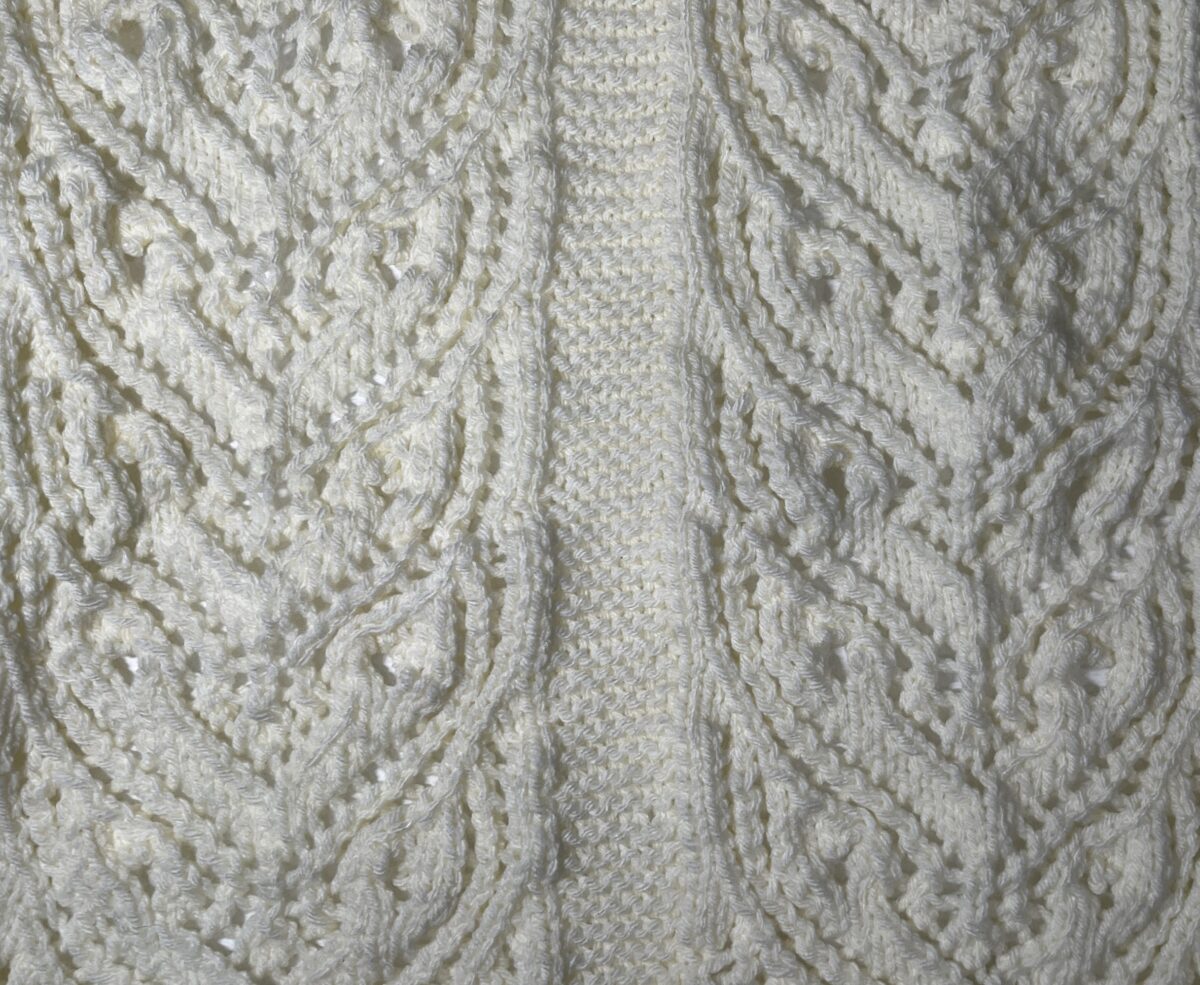
Welcome to the Winter Stitch Sampler Knit Along!
The Winter Stitch Sampler celebrates nature with patterns inspired by leaves, flowers, fruits, and animals! Each week, we’ll work one of the twelve squares of this patchwork pattern.
Winter Stitch Sampler Knit Along Overview
Week 1 – Butterfly Stitch
Week 2 – Vine Stripe Stitch
Week 3 – Owl’s Eye Stitch ⬅️
Week 4 – Traveling Vine Stitch
Week 5 – Little Blossoms Stitch
Week 6 – Bunches of Grapes Stitch
Week 7 – Sweet Shells Stitch
Week 8 – Wildflower Knot Stitch
Week 9 – Gooseberries Stitch
Week 10 – Cockleshells Stitch
Week 11 – Apple Leaves Stitch
Week 12 – Bear Claw Stitch
About Owl’s Eye Stitch
Owl’s Eye Stitch is a repeating lace pattern that looks a bit like the face of a barn owl! There are two columns of owls on this panel.
I used 204 yards (186 meters) of yarn to complete this panel.
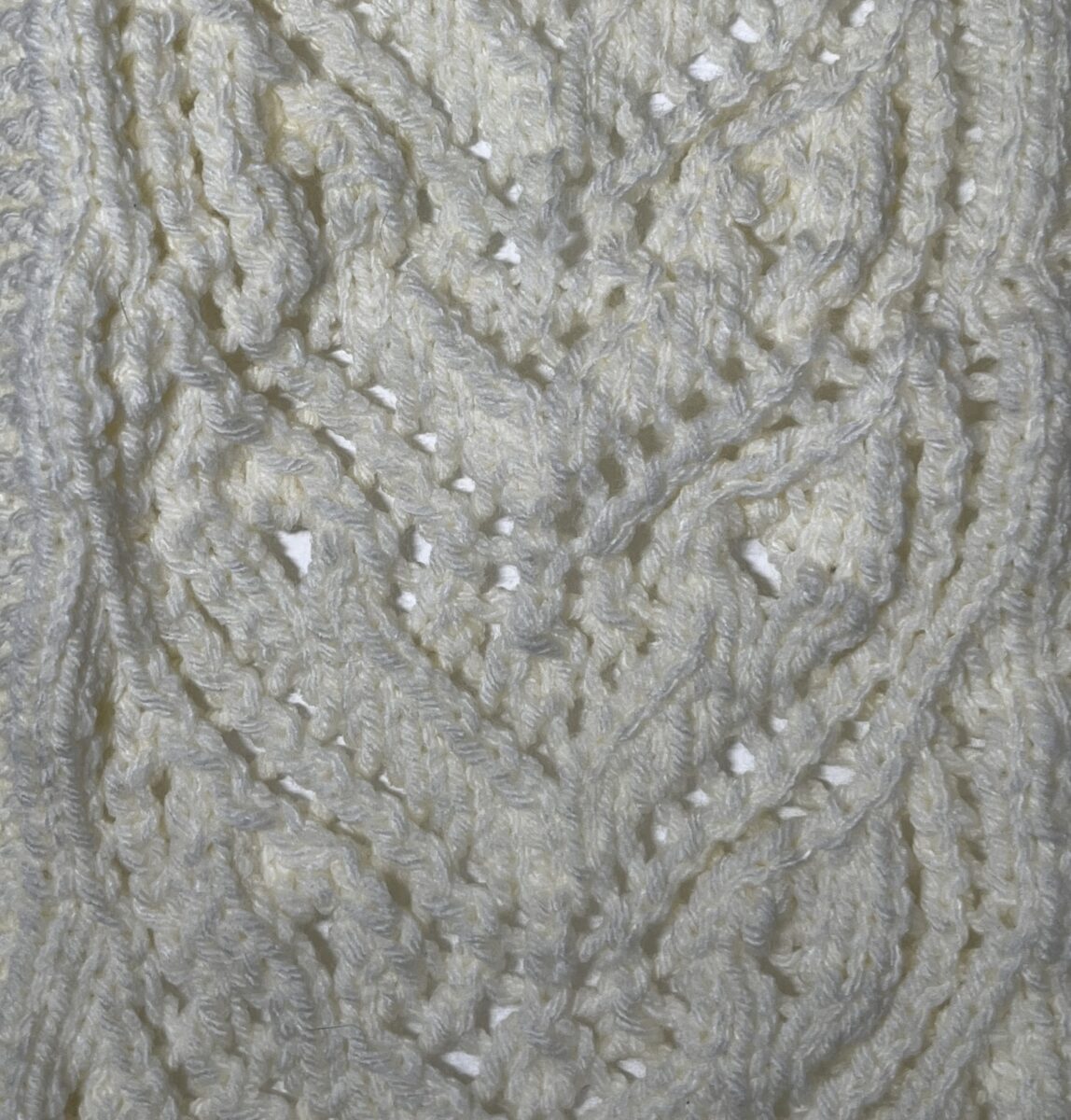
This stitch pattern was adapted from A Second Treasury of Knitting Patterns by Barbara Walker where it was called the Tiger’s Eye Stitch.
Abbreviations
BO – bind off
CO – cast on
k – knit
k2tog – knit 2 stitches together; single right-leaning decrease
k3tog – knit 3 stitches together; double right-leaning decrease
p – purl
SK2P – slip 1 knitwise, knit 2 together, pass slipped stitch over knit 2 together; double left-leaning decrease
ssk – slip 2 stitches knitwise, knit these 2 stitches together through back loops; single left-leaning decrease
st(s) – stitch(es)
yo – yarn over
Notes
I found it very helpful to use highlighter tape to keep track of my progress on the printed instructions. The instructions are simple, but very long.
Stitch markers aren’t as important, but if you use them, you’ll only need a few. To use them to completely isolate the two owl columns, place them as follows: 5-m-25-m-6-m-25-m-5. You can also simply add them as 30-m-6-m-30, which requires less shifting and will be easy to keep up with once the pattern is established. (This is the count that is used in the pattern below when markers are referenced.)
It is also important to note that the row count will change on on many odd rows, but the background stitches (sections with the first 5, center 6, and last 5 stitches) will not change.
Stitch counts for these rows include yarn overs.
Instructions
CO 66 sts.
Setup row: K all.
Row 1 (WS) – K5, p25, k6, p25, k5 [66 sts]
Row 2 – K5, *k2, (yo, k2tog) twice, k1, yo 4 times, k1, (k2tog, yo) twice, k1, (yo, ssk) twice, k1, yo 4 times, k1, (ssk, yo) twice, k8; rep from * ending second repeat k7 [82 sts]
Row 3 – K5, *p7, (k1, p1) twice into the 4 yo loops from the previous row, p11, (k1, p1) twice into the 4 yo loops from the previous row, p7, k6; rep from * ending second repeat k5 [82 sts]
For clarification, “(k1, p1) twice into the 4 yo loops from the previous row” means k1 into the first loop, p1 into the second loop, k1 into the third loop, and p1 into the fourth loop. The video can provide additional assistance.
Row 4 – K5, *k2, (yo, k2tog) twice, k4, k3tog, yo, k2tog, yo, k3, yo, ssk, yo, SK2P, k4, (ssk, yo) twice, k8; rep from * ending second repeat k7 [78 sts]
Rows 5, 7, 9, 11, 13, and 15 – K5, p until m, sl m, k6, sl m, p until 5 sts remain, k5
(If you are not using stitch markers, k5, p until you reach the center garter stitch panel, k6, p until 5 sts remain, k5.)
Row 6 – K5, *k2, (yo, k2tog) twice, k2, k3tog, yo, k2tog, yo, k5, yo, ssk, yo, SK2P, k2, (ssk, yo) twice, k8; rep from * ending second repeat k7 [74 sts]
Row 8 – K5, *k2, (yo, k2tog) twice, k3tog, yo, k2tog, yo, k3, yo, ssk, k2, yo, ssk, yo, SK2P, (ssk, yo) twice, k8; rep from * ending second repeat k7 [70 sts]
Row 10 – K5, *k2, yo, k2tog, k3tog, yo, k2tog, yo, k2, k2tog, yo, k1, yo, ssk, k2, yo, ssk, yo, SK2P, ssk, yo, k8; rep from * ending second repeat k7 [66 sts]
Row 12 – K5, *k3, (k2tog, yo) twice, k2, k2tog, yo, k3, yo, ssk, k2, (yo, ssk) twice, k9; rep from * ending second repeat k8
Row 14 – K5, *k2, (k2tog, yo) twice, k2, k2tog, yo, k1, yo, SK2P, yo, k1, yo, ssk, k2, (yo, ssk) twice, k8; rep from * ending second repeat k7
Row 16 – K5, *k1, (k2tog, yo) twice, k4, yo, SK2P, yo, k1, yo, k3tog, yo, k4, (yo, ssk) twice, k7; rep from * ending second repeat k6
Work these 16 rows 6 times for a total of 96 rows.
There are now 97 rows including the Setup Row.
BO all sts. Weave in ends.
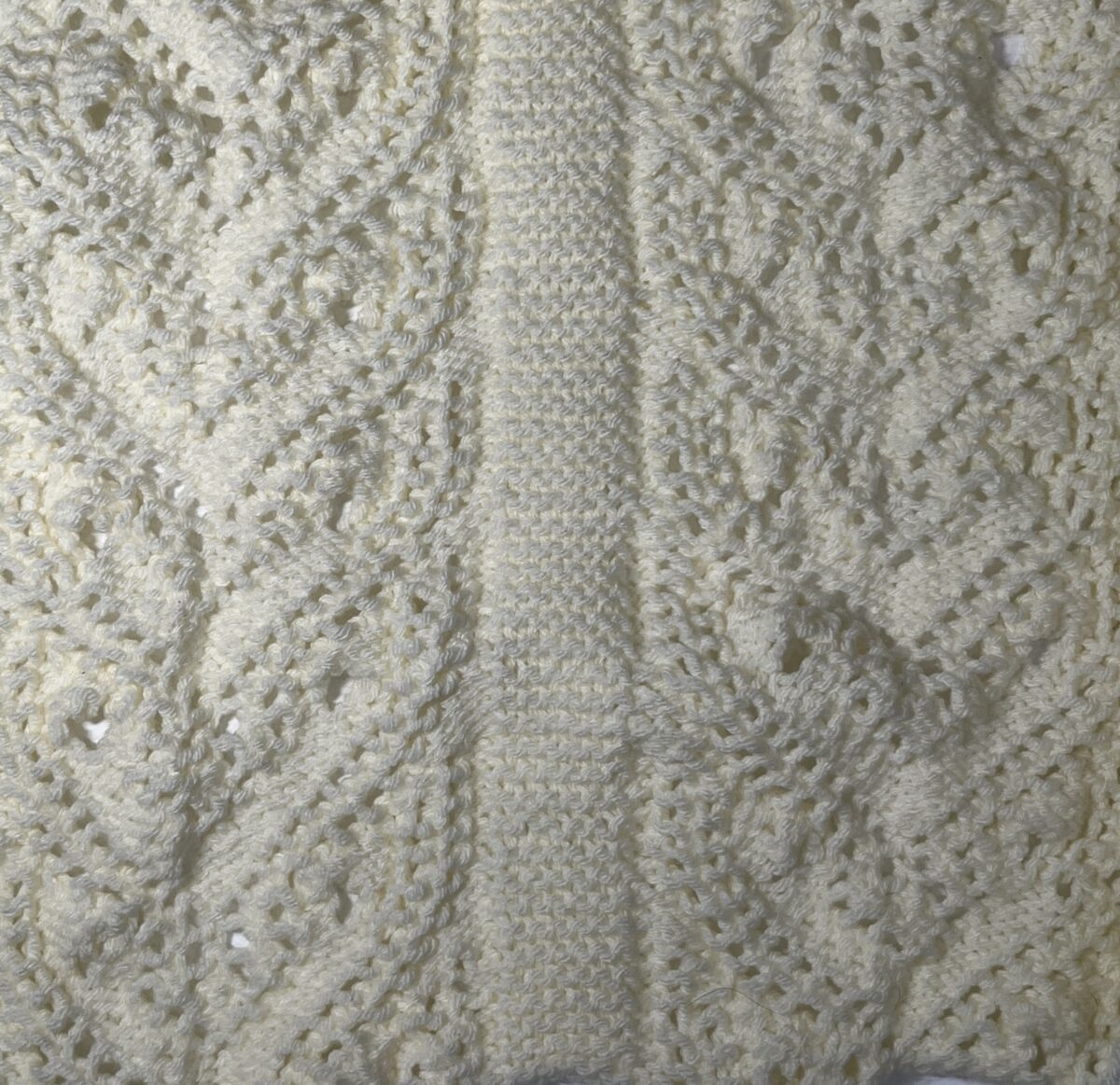
For General Use
I added 16 stitches and 1 row to this pattern so that we could use it in the Winter Stitch Sampler Knit Along. If you wish to use this stitch pattern in a different project, use the instructions below, which have not been modified.
This stitch is worked in multiples of 25 stitches across 16 rows and the pattern begins on the wrong side.
Row 1 – P all (WS)
Row 2 – K2, (yo, k2tog) twice, k1, yo 4 times, k1, (k2tog, yo) twice, k1, (yo, ssk) twice, k1, yo 4 times, k1, (ssk, yo) twice, k2
Row 3 – P7, (k1, p1) twice into the 4 yo loops from the previous row, p11, (k1, p1) twice into the 4 yo loops from the previous row, p7
Row 4 – K2, (yo, k2tog) twice, k4, k3tog, yo, k2tog, yo, k3, yo, ssk, yo, SK2P, k4, (ssk, yo) twice, k2
Rows 5, 7, 9, 11, 13, and 15 – P all
Row 6 – K2, (yo, k2tog) twice, k2, k3tog, yo, k2tog, yo, k5, yo, ssk, yo, SK2P, k2, (ssk, yo) twice, k2
Row 8 – K2, (yo, k2tog) twice, k3tog, yo, k2tog, yo, k3, yo, ssk, k2, yo, ssk, yo, SK2P, (ssk, yo) twice, k2
Row 10 – K2, yo, k2tog, k3tog, yo, k2tog, yo, k2, k2tog, yo, k1, yo, ssk, k2, yo, ssk, yo, SK2P, ssk, yo, k2
Row 12 – K3, (k2tog, yo) twice, k2, k2tog, yo, k3, yo, ssk, k2, (yo, ssk) twice, k3
Row 14 – K2, (k2tog, yo) twice, k2, k2tog, yo, k1, yo, SK2P, yo, k1, yo, ssk, k2, (yo, ssk) twice, k2
Row 16 – K1, (k2tog, yo) twice, k4, yo, SK2P, yo, k1, yo, k3tog, yo, k4, (yo, ssk) twice, k1
Repeat Rows 1 to 16 to form the pattern.



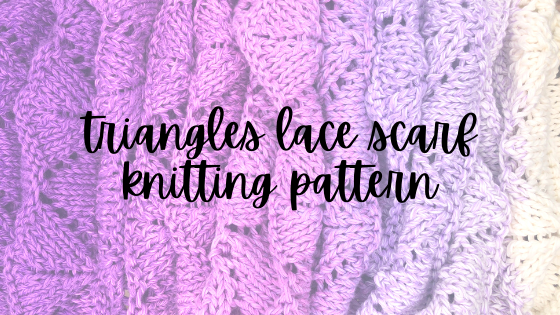
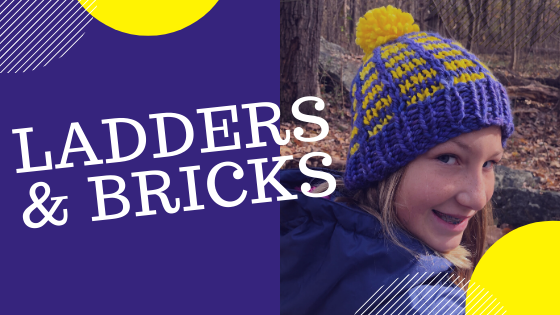

22 Comments
Pingback:
Pingback:
Sara Mc
I have always found cabling to be easier than the vine stitch from last week. It is truly beautiful and I made it through. Hopefully you will show us how to do 4 YO in a row which will prove interesting on this Owl stitch! Wow, another challenge!
Sara M
I did not see you demonstrate SK2P. I could not tell which 2 to P at the end of SK2P, I only ended up with one stitch????? That isn’t in the demonstration.
Holly
There are no purls in SK2P. The P stands for “pass.” 🙂
SK2P – slip 1 knitwise, knit 2 together, pass slipped stitch over knit 2 together; double left-leaning decrease
Sara McArthur
On Row 8, I’m getting the center of the pattern to be a yo in between k3 and ssk, k2. Is that right? The ssk and k2 amount to the same as the k3???
Holly
Yes, the center stitch of the owl portion is a yo on Week 3. Have you watched the video? I mention the center stitch for each row as a touchpoint.
https://www.youtube.com/watch?v=ZCYT9rsqTog
Sara
I see on the video you knitted the border on the swatch but the directions have the border knitted and then pearl up to border stitches For the big piece should we be pearling all the way or change toward the middle and K 12 or 13???
Holly
For the panel, you’ll work 3 strips of garter stitch and 2 strips of owl faces.
The setup is as follows:
5 stitches (garter stitch)
25 stitches (owl)
6 stitches (garter stitch)
25 stitches (owl)
5 stitches (garter stitch)
The 5, 6, and 5 stitches will always be knit because it is garter stitch.
The video covers the 25 stitches of the owl’s eye stitch only.
Anne N Stoddard
I bought the kit on Etsy this past week but can’t seem to open the first pattern to start.
Sorry to bother you, but maybe it is my 83 year old brain isn’t working, I wonder if you
would be so kind as to point me to where I can figure out how to see the patterns? Thank You
(1happyknitter on Ravelry) (happyknitter543@gmail.com) or 1-631-372-7194. Waiting to hear
from you. Anne
Holly
Hi Anne! Thanks for your purchase and thanks for reaching out.
If you aren’t able to open it at all, you probably need to unzip it. Here are the instructions:
PC – https://support.microsoft.com/en-us/windows/zip-and-unzip-files-f6dde0a7-0fec-8294-e1d3-703ed85e7ebc
Mac – https://support.apple.com/guide/mac-help/zip-and-unzip-files-and-folders-on-mac-mchlp2528/mac#:~:text=Unzip%20(expand)%20a%20compressed%20item,zip%20file.
Android (mobile) – https://support.google.com/files/answer/9048509?hl=en
If you did unzip it and need the password, visit https://www.atyarnslength.com/winter-stitch-sampler-knit-along/. Scroll to the Section Index. From there, select the week/password you need. (Passwords are at the top of each individual week’s post.) Passwords are also posted weekly on Facebook and Instagram (@atyarnslength), also on Mondays at 8:00AM, if that is easier for you.
Pingback:
Pingback:
Pingback:
Pingback:
Pingback:
Pingback:
Pingback:
Pingback:
whoiscall
Thanks!
Pingback:
Pingback: